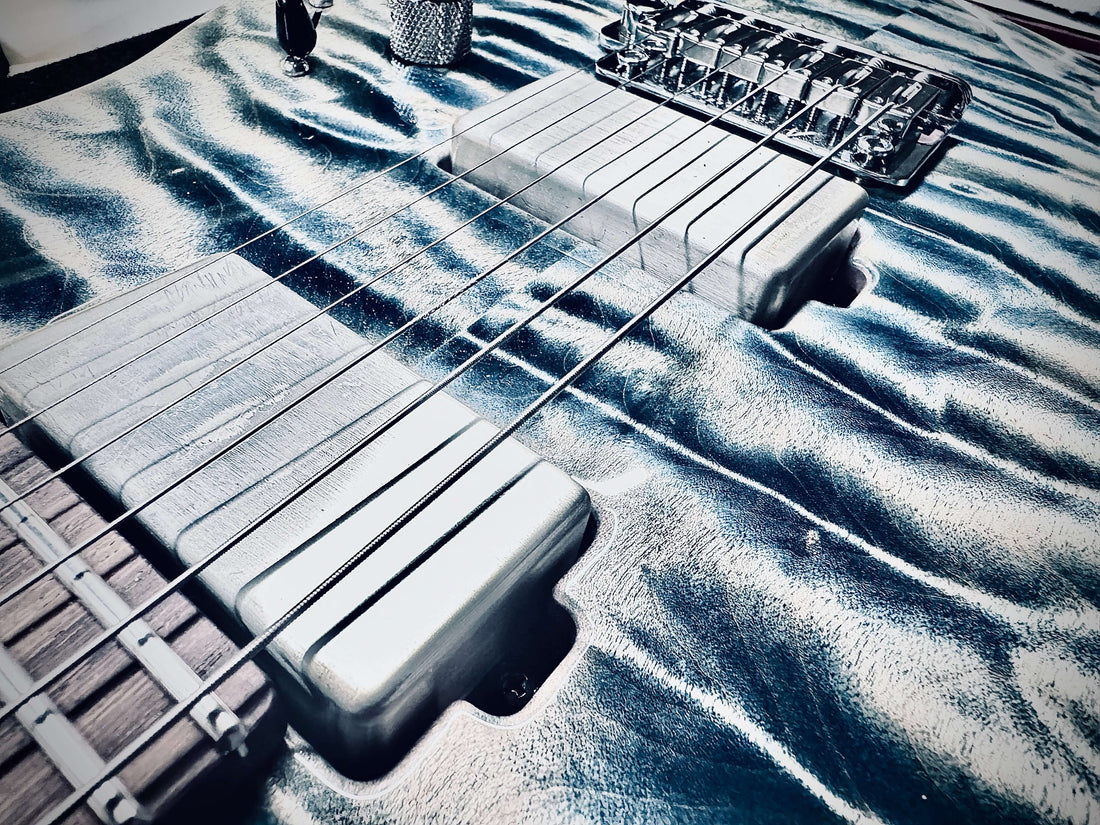
Humbucker Pickups: Covered vs Uncovered?
When it comes to chasing your perfect guitar’s sound, the choice between covered and uncovered humbucker pickups can make a noticeable difference.
Whether you’re chasing that perfect tone or just curious about the impact, understanding how covers influence your pickup’s performance is crucial. In this article, we’ll explore the tonal, aesthetic, and practical differences between humbuckers with covers and those without, helping you make an informed decision.
Why there is pickup covers
Pickup covers, often made from metal, plastic, or wood, aren’t just for looks. They play a significant role in shaping your guitar’s sound by interacting with the pickup’s magnetic field. Let’s break down how different covers—and the absence of covers—affect your tone
Covered Humbucker: Warmth and Clarity

- Tonal Impact: Metal covers, in particular, can subtly alter the magnetic field around the pickup, leading to a slightly warmer sound with a reduction in high frequencies. This can be great for jazz, blues, or any genre where a smoother, rounder tone is desirable.
- Aesthetic Appeal: Beyond tone, covers can give your guitar a more polished, vintage look. They’re available in various finishes, from chrome to gold, allowing for personal expression.
- Practical Benefits: Metal covers offer a bit of shielding from electromagnetic interference, potentially reducing noise. However, for un-potted pickups, there’s a downside—metal covers can vibrate and cause microphonic feedback, especially under high gain.
Uncovered Humbuckers: Bright and Direct

- Tonal Impact: Without a cover, the pickup is free to capture a more direct, bright, and open sound. The high frequencies are more pronounced, and the picking attack is sharper, making uncovered pickups ideal for rock, metal, and genres where clarity and presence are key, making the sound more likely to cut through a mix.
- Aesthetic Appeal: Uncovered pickups expose the coils, giving your guitar a raw, edgy appearance. This look is often preferred by players who want their instrument to reflect their music’s intensity.
- Practical Considerations: While uncovered pickups lack the shielding benefits of metal covers, they also avoid the potential pitfalls of microphonic feedback. Plus, they’re easier to maintain, with no cover to collect dust or require polishing.
Additional Consideration
Metal covers can provide some protection against electrical interference. However, on pickups that aren’t wax-potted, the metal cover may vibrate, which can lead to increased microphonic feedback, particularly in high-gain settings.
Which One is Right for You?
Choosing between covered and uncovered pickups ultimately comes down to your musical style, aesthetic preferences, and how you balance tone with practicality. Are you after a smooth, vintage sound with reduced noise, or do you crave the bright, cutting tone that can slice through any mix?
Experimentation and Customisation
Don’t be afraid to experiment. Many humbucker covers can be removed or swapped, allowing you to test different configurations. Just remember, this can be a delicate process—consider seeking out a professional if you’re unsure.
